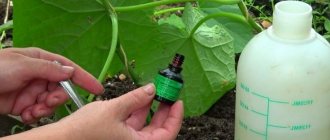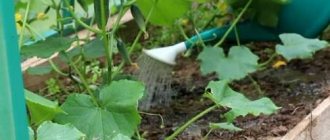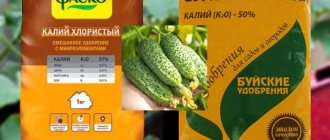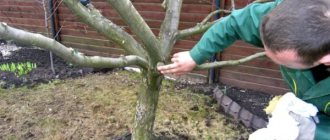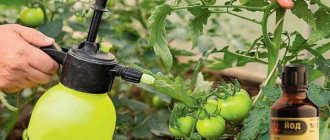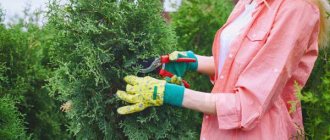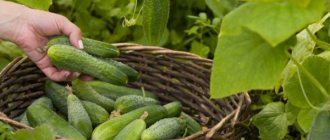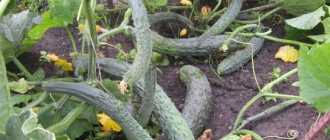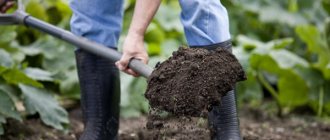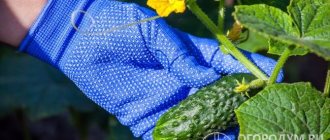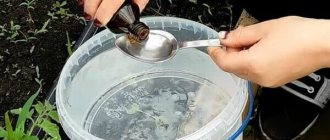125
Iodine for cucumbers is an effective means for treating garden crops against pests and diseases. This is a universal, simple and very affordable tool. Treatment of cucumbers with iodine against fungal infections shows greater effectiveness. The use of iodine is also indicated for the treatment of other garden crops.
Using this remedy you can fight fungal diseases. Only processing should be done with the correct application of the proportions of the product. This method is suitable for processing cucumbers in open ground and in a greenhouse.
Pros and cons of milk with iodine for cucumbers
Like any other remedy, a mixture of milk and iodine has both advantages and disadvantages. The effectiveness of the application has already been appreciated by many gardeners, as can be judged by the large number of enthusiastic reviews. But it’s easy to ruin everything by violating the dosage. Then the result will be the opposite.
Useful properties and need for iodine for cucumbers
Iodine is widely used in medicine as an excellent antiseptic. This property in gardening helps to overcome various types of rot, verdigris and late blight. In addition, it is also used for disinfection of seed material.
Using this substance for fertilizing helps achieve the following results:
- accelerate the growth of plantings;
- nourish the roots of plants;
- increase productivity;
- improve taste;
- restore existing damage;
- activate the appearance of ovaries;
- destroy the fungus in the first stages of its appearance.
Why add milk or fermented milk products, beneficial properties for cucumbers
Of course, you cannot use iodine in its pure form. The plant will receive nothing but a burn. That is why it is first diluted in milk.
This solution is used for spraying or watering and has a number of useful properties:
- nourishes cucumbers with beneficial microelements;
- the fungus does not tolerate lactose, which is contained in milk; it dies when it comes into contact with it;
- milk envelops the stem and leaves with a thin film, which prevents pathogenic microorganisms from penetrating inside.
The solution of milk and iodine contains microelements that are very important for the normal growth of cucumbers: sulfur, calcium, potassium, iron, magnesium, phosphorus.
Attention! To prepare the solution, you should absolutely not use pasteurized milk with a high fat content.
Instead of milk, you can take yogurt or kefir. Such a solution will promote flowering of plantings, which will significantly increase the volume of the harvest.
Read why cucumbers may turn yellow when grown in a greenhouse and what to do.
Classic recipes for spraying
To feed cucumbers, formulations are often made with milk, and to counteract pests and diseases - from fermented milk products . You should not exceed the iodine norm, as this will reduce the beneficial properties of milk.
A universal recipe for feeding and protecting cucumbers:
- Rub laundry soap (35–40 g required).
Soap in solution promotes the formation of a protective coating on the leaves
- A water-alcohol solution of iodine is purchased at a pharmacy.
Iodine can be purchased at a pharmacy
- Add milk (1 l), iodine (25 drops) and soap shavings to 9 liters of slightly warmed water.
- Mix all ingredients thoroughly and immediately begin spraying the plants.
When foliar processing of cucumbers, all lactic acid solutions are prepared with soap. Thanks to it, the antiseptic properties of the composition are increased, and the combination with milk helps to create a protective coating on the leaves.
You can replace milk with whey, yogurt or kefir. Then mix one or the other with water in equal proportions. Then add the same ingredients as in the previous recipe and mix. At the late stage of infection of cucumber lashes, 10 ml of iodine (1 bottle) will be required. This is how only adult cucumber vines are processed.
Terms of use of solutions with iodine for processing cucumbers
The good thing about the mixture, which is usually prepared from iodine and milk, is that it can be used for fertilizer and treatment at any stage of plant development:
- After the appearance of 4 true leaves, it is recommended to treat the seedlings every two weeks to prevent diseases;
- 7-10 days after transplanting the potatoes to a permanent bed;
- After the first shoots appear from the ground;
- During the formation of the first ovaries;
- During fruiting, treatment will help increase the yield.
Attention! Repeated treatment after spraying is carried out only at the root.
When preparing the beds, an iodine-milk solution is used for watering as a disinfectant.
If you plan to process greenhouse plantings, then you can start after the appearance of two full-fledged leaves.
Features of feeding
To feed vegetables as efficiently as possible, it is advisable to use whey along with iodine. It is recommended to use a similar mixture for both cucumbers and tomatoes. If the solution is used as a weapon in the fight against various pests (for example, whitefly butterflies), it is advisable to spray the bushes. The fact is that the whey contains a large amount of useful substances that cucumber needs. Firstly, it contains potassium, phosphorus, nitrogen and other amino acids, in addition, do not forget about iodine.
To prepare fertilizer for spraying cucumbers with iodine, you need to add 1 liter of whey to 10 liters of water, as well as 10 ml; it is recommended to use the solution no more than once a month; you need to spray it when the forecast is not expecting rain in the near future.
It is important not to overdo it with the concentration and frequency of watering, and also not to change the proportions of the ingredients yourself. The fact is that the whey has a fairly fatty structure, in addition, it has high acidity levels, which, if diluted incorrectly, can significantly disrupt the chemical composition of the soil. To determine how much solution you need, you should take as a basis one liter of mixture per adult bush. It is important to note that immediately after treatment with iodine serum, you need to generously water the bushes, especially if you are growing vegetables in a greenhouse.
Root and foliar feeding
- Iodine and cucumbers - is this possible? It turns out that iodine solution or Farmayod is practically irreplaceable in the process of growing vegetables and caring for them.
The described vegetable is very fond of fertilizing; in order to reap a rich harvest, it is necessary to generously fertilize the crop.
- The foliar nutrition system is best suited for carrying out preventive measures.
- The root nutrition system is produced when cultivating soil for cucumbers.
Processing and feeding cucumbers with milk or whey with iodine: recipes for different cases
This universal product has a fairly wide range of applications. The main function is to protect plantings from pests and infections. But there are other ways to use it. We have prepared for you the best recipes for processing cucumbers.
Treatment of diseases
By mid-summer, the risk of developing fungal diseases increases. The solution will help fight infection in the first stages of the disease. It can be used both for root watering and for spraying vegetative parts. But if the area of planting infection is too large, then it is impossible to do without specialized drugs.
Iodine plays the main role in fertilizer. It has several beneficial effects:
- fights fungus;
- kills germs;
- strengthens the immune system.
This element not only helps destroy bacteria, it increases resistance to many diseases that affect weak plantings. You can also dilute it in plain water.
But milk is also used for a reason. It enhances the beneficial properties of iodine, reduces the risk of recurrent disease, and envelops the leaf plate with a protective film, preventing harmful bacteria from penetrating inside.
Important! A solution of iodine and milk helps to defeat diseases caused by bacteria and fungi; it is powerless against viruses (for example, mosaics). Read the article about cucumber diseases, which tells you how to defeat various infections.
Popular recipes
The milk-iodine composition perfectly fights those pathogenic organisms that have already entered the bush, but have not yet managed to penetrate the vascular system. As a preventive measure, spraying is carried out weekly in mid-summer, when the peak of the disease usually occurs. If the weather is rainy and cool, then the activity of the fungus increases significantly, so treatment can be carried out more often.
At the very first stages of the disease, spraying is carried out 2 times every 7 days, until no trace remains of the disease. But those parts of the leaf that show signs of damage must be removed from the bush.
Iodine
From a nematode
There are several ways to process cucumbers with a solution of milk (kefir, curdled milk) and iodine, let’s look at them in the table:
| Recipe Ingredients | Instructions |
| All components are mixed, the solution is sprayed on the plantings |
| All ingredients dissolve in warm water. It is recommended to rub the soap first. |
| The substances are diluted in milk and then filled with water. Can be used for soil treatment and planting. |
| The mixture is used to treat plantings when leaves and shoots turn yellow. This is done once every 10 days until the bush is completely restored and new leaves appear. |
All of the above step-by-step recipes are suitable for spraying bushes, but you can also water with them to combat root rot in the first stages of its manifestation. In this case, there is no need to pour the solution under the root; it is enough to make a hole 5 cm from the bed, where you need to pour the mixture.
Read why cucumber ovaries, lashes and leaves can dry out.
Foliar (spraying)
Foliar treatment with whey, milk or curdled milk and iodine has shown good effectiveness, for which the fertilizer is prepared in the following way:
- Iodine in the amount of 25 drops is dissolved in 10 liters (bucket) of water.
- 1 liter of milk (you can take the same amount of curdled milk) or 0.5 liter of whey is added to the resulting antiseptic substrate.
- The mixture should infuse for about a day.
The product is used for spraying cucumber plantings; this amount is enough to treat 10 square meters.
This treatment will help increase the bush’s resistance to aphids and other pests, saturate the cucumbers and destroy pathogenic microorganisms in the first stages of their appearance.
Dangerous infectious diseases cannot be defeated with this method if they have already begun to show their activity. But you can protect the plant at the initial stage by increasing its immunity and resistance to disease.
Root (watering)
Very often, cucumber plantings suffer from root rot. In advanced cases, it leads to the death of the bush. To prevent the development of the disease, there is no need to pour water and fertilizer directly onto the root itself. It is enough to spray the soil around the bushes with a disinfectant composition, and apply the fertilizer itself into a dug hole at a distance of 5-15 cm from the root.
Attention! Cucumbers planted in greenhouses or greenhouses are processed after the soil dries out after the last watering. During processing, the greenhouse must be opened for ventilation.
To carry out root feeding, you can use the following recipes for preparing fertilizers:
| Recipe Ingredients | Instructions |
| The solution is used for watering at the rate of 0.5 liters per plant. |
| Pour the grass with water and kefir and leave for 10-14 days to ferment. The resulting concentrate is diluted with water 1:10 before use. |
| The resulting solution sits for two days and is used for root watering during flowering (June-July) of cucumbers. |
| The components are thoroughly mixed, the solution is used to produce new ovaries, which will significantly increase the yield of the plantings. |
Pest Control
Many insect pests are not averse to eating cucumbers, for example, whiteflies, aphids, slugs or spider mites. But the milk film contains lactose, which these parasites cannot tolerate.
And iodine burns the surface of their body and causes poisoning. Insects will not settle on the treated leaf and will not leave their larvae there, as it becomes poisonous to them. Therefore, it is very good to spray cucumbers with a milk-iodine mixture in order to prevent the appearance of voracious pests.
Popular recipes
To combat insects, the solution can be prepared according to the following recipes
| Recipe Ingredients | Instructions |
| The components are mixed with each other and dissolved in water. The soap must first be rubbed, it will allow the composition to better adhere to the surface of the leaves. |
| The ingredients dissolve in water; for better adhesion to the bush, you can add a little garden or liquid soap to it before spraying. |
Solutions prepared according to these recipes are used only for spraying the vegetative parts of the bush.
As a fertilizer
A solution of iodine and milk is used as a top dressing to increase the immunity of plantings; it supplies the bushes with micronutrients. Iodine in its composition activates metabolic processes, which leads to the formation of new ovaries and improved taste of fruits.
Milk contains many useful substances (phosphorus, nitrogen, iron, potassium, and others), which, through fertilizing, enter the vascular system of the bush and are distributed throughout the plant.
The most valuable for cucumbers are:
- Nitrogen – is actively absorbed during the growth of shoots and leaves;
- Phosphorus – important for the normal development of the root system;
- Potassium – activates the process of ovary formation.
Important! Milk for preparing fertilizers must be low-fat, otherwise it will harm the plantings. If only the whole product is available, it must be diluted with water.
Milk-iodine fertilizer is a biological fertilizer, it does not contain chemicals or harmful impurities. Therefore, its use will benefit the roots. The solution can be prepared according to this recipe:
- Mix water (10 l) with milk (1 l) and add iodine (15 drops).
Such a nutrient liquid activates the natural protective functions of plants, prevents the appearance of fungus and saturates it with useful microelements.
Attention! Regular treatment of plants with a composition of milk and iodine will minimize the use of chemicals.
Watering is carried out after planting the cucumbers in the garden and is repeated during the period of active fruiting. Feeding can be done 2 times a week.
Popular recipes
Treatment of plantings is carried out at different periods of cucumber growth by spraying and watering. You can start as soon as 10-14 days have passed after the first two full leaves appear.
Watering with the mixture or spraying will strengthen the root system and immunity of the plantings, and also increase their resistance to pests.
It is recommended to water cucumbers in open ground with a milk-iodine solution no more than twice during the entire season. The rest of the time it is better to use other means of feeding and protection.
Spraying of plantings can also be carried out 2 times per season. A small amount of boric acid can be added to the prepared solutions, which activates the process of ovary formation. The treatment must be repeated during the fruiting period.
We offer popular recipes for fertilizing cucumbers with milk and iodine.
Ordinary
- Milk – 1 l;
- Water – 6 l;
- Iodine – 6 drops.
The product is used to fertilize cucumber seedlings.
With milk, iodine and soap
- Milk – 1 l;
- Iodine – 3 drops;
- Laundry soap (pre-grated) – 50 g.
Mix all the ingredients until the soap is completely dissolved; the composition provides foliar feeding, which nourishes the plants and protects them from pests.
Milk cannot be used in its pure form; it only works effectively in combination with iodine.
Attention! Spraying of plantings can be carried out only after two leaves appear on the seedlings; watering is recommended only after treatment.
With yeast
- Warm milk – 1 l;
- Yeast – 2 tbsp;
- Sugar – 1 tbsp;
- Milk – 1 l, Iodine – 10 drops, Water – 8 l.
At the first stage, milk is mixed with sugar and yeast and left for a couple of hours to ferment.
Only then is it brought to the required amount with water and watered at the rate of 1 liter for each bush.
With ammonia
- Water – 10 l;
- Milk – 2 l;
- Ammonia – 1 tbsp;
- Iodine – 10 drops.
Spraying with the composition is carried out at the stage of flower and ovary formation.
With urea
- Water – 8 l;
- Milk – 2 l;
- Iodine – 8 drops;
- Urea – 50 g.
It is enough to water the cucumber plantings with the prepared solution once a season, using 0.5 liters of fertilizer for each bush.
With curdled milk
To prepare fertilizers, you can use not only milk, but also yogurt; the beneficial properties of the composition will not change. But treatment with such a solution can only be carried out among adult plants that have begun to bear fruit. It will strengthen the roots, increase the nutritional value of the soil, and deliver beneficial microelements to the vascular system, which, in turn, will have a good effect on the taste of cucumbers.
To prepare the solution you will need:
- Yogurt - 5 l;
- Iodine – 15 drops.
Root feeding is carried out no more than 2-3 times a week.
With serum
- Whey – 1 l;
- Iodine – 2 drops.
The mixture is ideal for pest control. Treatment is carried out once every 5-7 days. After this, a white coating may appear on the leaf plate, this is normal. After watering or rain it will wash off.
If iodine is not available, it can be replaced with ammonia or brilliant green.
The benefits of iodine in the garden
An excellent alternative to expensive fertilizers and other chemicals is treatment with iodine solution at the initial stages of their growth. Such procedures are used as prophylaxis against damage by fungal microorganisms.
Cucumber is highly susceptible to sudden changes in the external environment; it is negatively affected by high air humidity, and is also often attacked by harmful microorganisms.
It is worth remembering that using iodine and milk to spray cucumbers, you can get rid of the following problems:
- foci of harmful microorganisms at the stage of their development;
- bacteria;
- viruses;
- fungus.
The effectiveness of the method can be explained by the strong antiseptic properties of the drug. With timely and regular spraying, you can get rid of infections on the leaves and stems of the plant.
In fact, iodine is a participant in the biological process that is involved in the exchange of nitrogen in the soil. Therefore, watering cucumbers with such solutions can significantly reduce, and sometimes completely eliminate, pests in the soil.
If you regularly feed cucumbers with iodine, the effect will be similar to that of using fungicides containing copper. They are effective against diseases such as late blight, powdery mildew, and rot. For this purpose, a solution based on medicinal brilliant green is also used.
Such antiseptic agents stimulate the growth of the crop and protect it from disease. It is also possible to treat plants during the period of fruit ripening, but the dosage must be observed.
Basic rules for processing cucumbers with milk and iodine
The milk-iodine mixture has a number of useful properties, as we described above. But all of them will appear only if the rules for dilution and use of the solution are followed:
- Treatment of leaves and shoots is carried out from all sides;
- Before adding the composition to the soil, it is recommended to moisten it additionally;
- If the next morning after spraying it rains or dew has settled, it is recommended to repeat the treatment;
- It is necessary to fertilize cucumbers with a solution of milk and iodine in cloudy weather, it is advisable to do this in the evening or morning;
- You should not combine milk-iodine fertilizer with other types of fertilizers;
- Plantings can be processed every week;
- Add iodine strictly as directed in the recipe, otherwise it may cause burns to the stems and leaves;
- The prepared solution cannot be stored; it must be used immediately and the remainder discarded.
These simple rules will help improve the health of cucumbers and effectively use fertilizing.
The above rules apply to both greenhouse cucumbers and plants in outdoor beds.
Zelenka or iodine
As it was said earlier, every gardener strives to get an environmentally friendly crop, the cultivation of which did not use chemicals harmful to human health. One of the folk remedies for fertilizer and preventive treatment of bushes is brilliant green. Just like iodine, brilliant green contains all the necessary components to combat diseases of cucumbers, as well as to enrich the soil for the crop.
As for the proportion, brilliant green is added to rain or settled water, and the following standards are observed:
- 10 liters of water
- 15 ml greenery
- 70 grams of urea
- Whey or sour milk - about 1 liter
The fact is that brilliant green contains copper, which gives the solution powerful antiseptic properties; in addition, it is extremely important for fertilizing the soil. It is advisable to use a green solution on swampy soil, where there is practically no copper. In all other cases, experienced summer residents recommend the use of iodine, since its composition is much richer.
Features of processing in greenhouses and open ground
Features of processing cucumbers in greenhouses and open beds have some distinctive features:
- In open beds there is a high probability of rain, so it is important that no rain falls on the cucumbers in the first couple of hours after spraying. During this time, the solution will have time to be absorbed into the sheet and create a protective film on it that will last for the next 5-7 days.
- In closed structures, precipitation is excluded, but air circulation is not so intense. Therefore, you need to use treatment less often. It is carried out approximately once every 14 days.
- For preventive purposes, the solution is recommended to be used to disinfect the surface of a greenhouse or greenhouse. In open beds you can cultivate the soil. So that microbes do not develop in it.
Advice! If bottles with iodine without lids are placed in the greenhouse, late blight will not appear on the plantings.
Advantages and disadvantages of the product
Iodine in high concentrations can be dangerous for cucumbers
Benefits of using iodine in the garden:
- increases fruiting time;
- increases productivity;
- stimulates seed germination, crop growth, flowering;
- saturates vegetables with vitamin C;
- minimizes damage by fungal infections;
- has a positive effect on the number of ovaries.
In high concentrations, iodine can be toxic to humans. When used in greenhouses, there is a high probability of poisoning from its vapors. It is necessary to take care of personal protective equipment (mask or respirator), not to stay in a closed space for a long time, and after spraying cucumbers with iodine solution, immediately leave the room.
It is necessary to strictly follow the method of application indicated in the recipe. An overdose of iodine substances results in chemical burns to the plant.
Mr. Summer resident reminds: safety measures
The dairy content of the product does not have any major impact other than feeding the soil and plants. But if an antiseptic comes into contact with human skin during treatment, it can cause burns. Therefore, it is important to consider several recommendations before starting work:
- Prepare protective clothing for exposed areas of the body.
- Dilute the fertilizer components in strict compliance with the specified proportions.
- Spray using a spray bottle;
- Feeding work is carried out only in dry, windless weather;
- The finished mixture cannot be stored after use.
If the drops do get in through your nose or mouth, drink plenty of water to prevent intoxication.
What are the benefits of antiseptic for cucumbers?
Iodine is a reliable antiseptic used for various medical purposes, so the decision to use its properties in the garden for processing cucumbers became quite natural. This substance contains a lot of copper, which has a beneficial effect on plants, including cucumbers.
When planting and further caring for garden and vegetable plants, pharmaceutical products bring a lot of benefits: brilliant green, potassium permanganate, boric acid, ammonia, soda, vinegar, tar soap.
It is watering with a solution with the addition of iodine that allows you to overcome diseases such as late blight and gray rot when growing cucumbers. Also, the effect of such a solution has a rejuvenating effect on cucumbers; they begin to fade much later.
Iodine is quite saturated with microelements, so its use as a fertilizer and top dressing restores and activates the vitality of cucumbers and increases the abundance of the harvest. The fact that iodine is both accessible and effective and has a wide range of effects may make other insecticides and fertilizers unnecessary.
Did you know? The length of the largest cucumber known in the world was one meter and eighteen centimeters. It was possible to grow it thanks to favorable weather conditions in Israel.
How to use "On the spot": instructions for use
This is interesting: We sow and care for black radish
